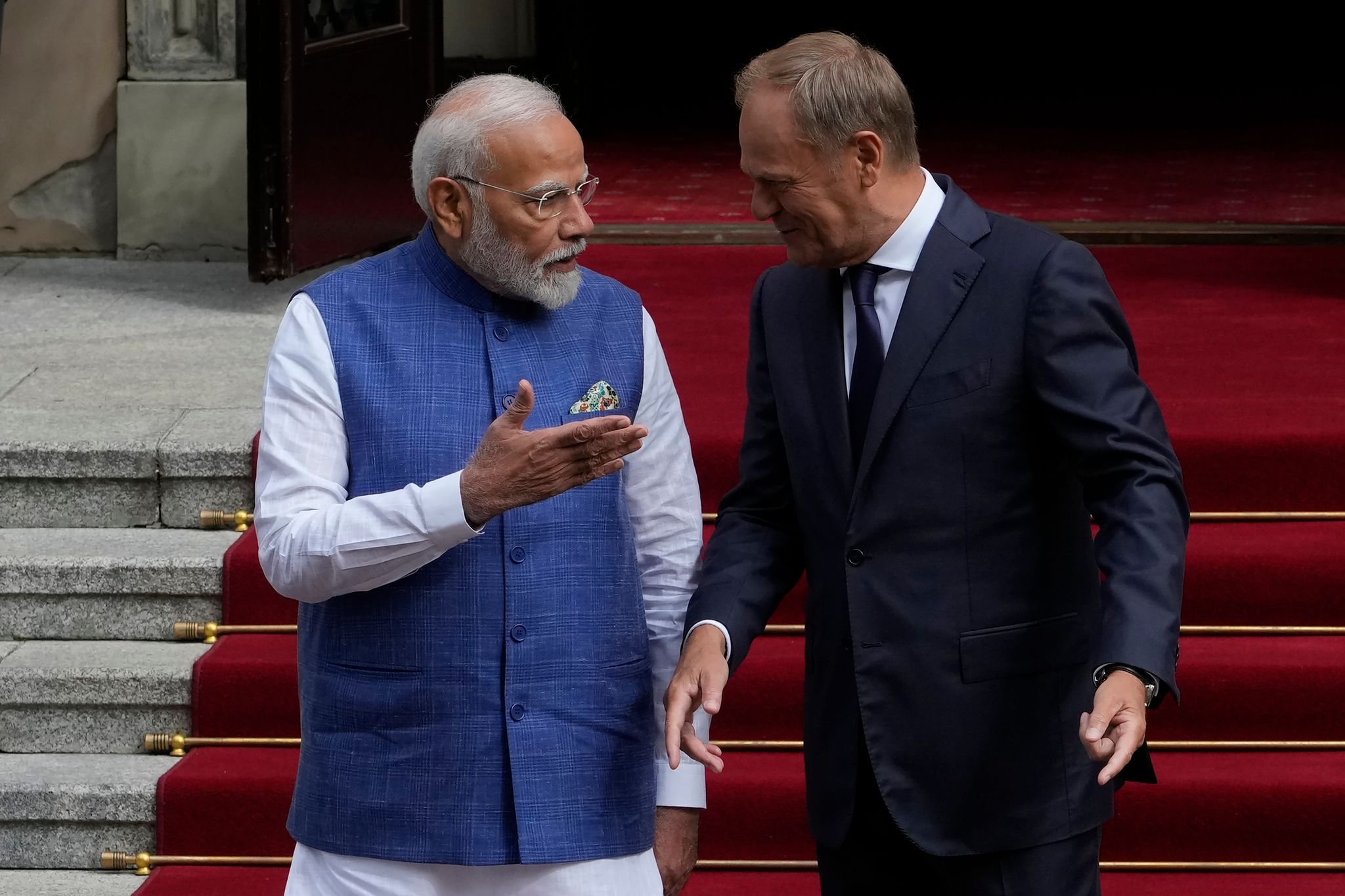Narendra Modi’s visit to Kiev on Friday was the first by an Indian prime minister since the collapse of the Soviet Union and the establishment of diplomatic relations between the two countries in 1991. The obvious question, therefore, is: Why is this historic state visit taking place at this time?
The Indian Ministry of External Affairs has released some details earlier. It should be about intensive contacts between the two countries and cooperation in the fields of defense, economy, science and technology. In fact, cooperation agreements were also signed in the fields of agriculture, medicine, culture and humanitarian aid. So far, so predictable. But of course this is also about war. Both Ukraine and the West hope that Delhi, with its influence in Moscow, can play a mediating role.
India's defense depends on Russia
India has never explicitly condemned Russia’s attack on Ukraine, Modi has merely repeated his mantra-like statement that “this is not an era of war”, which on the one hand sounds good and true, but on the other hand is currently being challenged by countries in the world. The reality in many places around the world, therefore, is unclear how serious Modi is about ensuring peace regarding the war in Ukraine.
Modi did not personally attend the Ukraine summit in Switzerland in June, which was supposed to pave the way for possible peace talks, but instead sent only an official from his foreign ministry. India also did not sign the final communique. The fact that Delhi participated in the summit could be seen as a positive signal. India is one of the countries being considered to host the follow-up conference, along with other countries that have sought to remain neutral in the conflict, such as Brazil and Saudi Arabia. In the best case scenario, Russia should also attend and a peace could be negotiated. It seems there is still a long way to go until then.
However, on Thursday it emerged that a follow-up virtual meeting to the Ukraine summit had taken place with representatives of more than 40 countries. More are expected to follow. Modi's visit to Kiev is also an indication that diplomatic efforts are underway to bring Kiev and Moscow together in peace talks – especially since the Kiev visit coincided almost exactly with the announcement of the next meeting.
Modi is said to have urged Zelenskiy to hold talks with Russia
Volodymyr Zelensky wrote on Telegram on Friday that one of the topics of the meeting would be a peace summit and what the path to it would be. According to Reuters, Modi is said to have offered himself as a “friend” of Kiev, but urged Zelensky to hold talks with Russia. Speaking to reporters, he called for dialogue between Moscow and Kiev as soon as possible, but stopped short of calling for the withdrawal of Russian troops from Ukraine. “We expect both sides to find a solution,” Indian Foreign Minister Subrahmanyam Jaishankar added.
Moscow currently refuses any negotiations unless Ukraine withdraws all its troops from the country’s eastern regions, refuses to join NATO, and demilitarizes. Demands that Kiev cannot seriously concede. Of course Modi knows this.
The Indian prime minister has good reason not to jeopardize relations with Putin. India is dependent on Russia for now, at least for defense. About 60 percent of India’s military hardware comes from Russia, some of it from the Soviet Union. At the same time, since the outbreak of the war in Ukraine, India has become the second-largest buyer of Russian gas and oil supplies after China because of the cheap prices caused by Western sanctions.
On the other hand, the ongoing conflict with China over the Himalayan border is heating up in India. The fact that Beijing and Moscow have grown closer since the war on Ukraine is seen as uncomfortable in Delhi. At the same time, Russia and China are important trading partners. So the state of the relationship: complicated.
It is possible that Modi's visit is not just about relations with Kiev, but also about India's relations with Europe, which has almost uniformly condemned Russia's war against Ukraine. It was not without reason that Modi was a guest in Poland the day before. The EU is India's largest trading partner, ahead of the United States and China.
There are signs of comfort at the memorial to the murdered children
During a state visit to Moscow in July, Modi said India wanted to work towards peace between Ukraine and Russia through dialogue and diplomacy. “Peace is the most important thing,” Modi said on that occasion, sitting alongside Vladimir Putin. “When innocent children are killed and you see them die, your heart aches, and the pain is unbearable.”
But Ukraine was also bombed by Russia on the day of Modi's visit to Moscow, including a children's hospital in Kiev. Zelensky was a sharp critic of Modi's visit to Putin at that time. Therefore, the Indian Prime Minister's visit to Kiev was also a kind of balance. When visiting the memorial to children who died in the war, the Indian Prime Minister put his hand on Zelensky's shoulder for a very long time.
In Delhi, this type of diplomacy is called “multi-alignment,” that is, taking multiple sides in different camps. It is a continuation of what was known in the old Cold War as the policy of non-aligned countries, not wanting to side with either the United States or the Soviet Union.
Therefore, the expectation of negotiations, as demonstrated by Modi’s visit to Kiev, is a balancing act. The expectation from Kiev and the West is that neutral countries with influence in the Kremlin will put pressure on Putin to persuade him to negotiate. But it turns out that these countries can easily pressure Kiev to submit to Moscow’s conditions.

“Subtly charming web junkie. Unapologetic bacon lover. Introvert. Typical foodaholic. Twitter specialist. Professional travel fanatic.”







